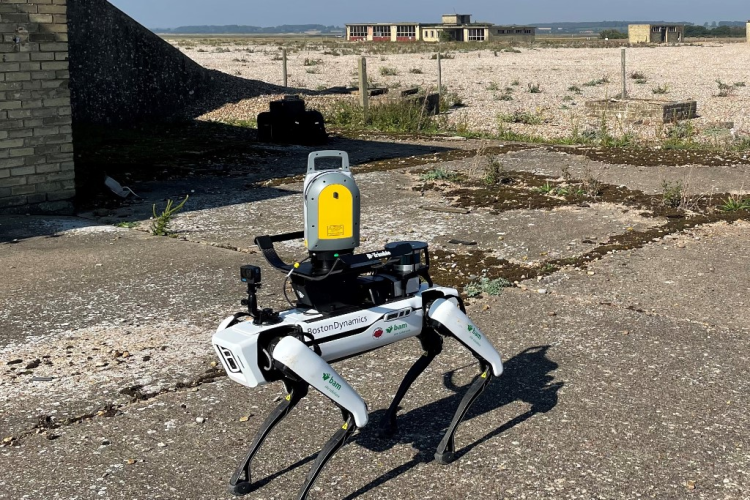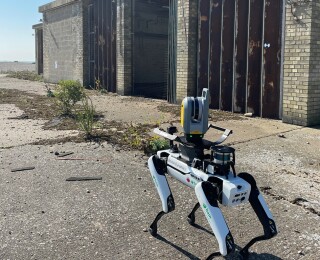Buildings at the Orford Ness Nature Reserve on the Suffolk cost were used to test the atomic bomb during the 1960s and have been off-limits to National Trust visitors and staff for several years.
Bam is now surveying the site for the National Trust, which owns the site, using drones and a dog-like robot named Spot, manufactured by US firm Boston Dynamics, equipped with a Trimble X7 scanner.
The work is the first stage of a project involving partnerships with Historic England and University College London’s Bartlett School for Sustainable Construction.
Two Atomic Weapons Research Establishment laboratories on Orford Ness, known as pagodas or Labs 4 and 5, are classified as scheduled monuments. Constructed in 1960, the buildings were two of six laboratories used as test cells to carry out environmental tests on the atomic bomb. The tests were designed to mimic the rigours to which a weapon might be subjected before detonation, including vibration, extremes of temperature, shocks and G forces.
Robot Spot has a camera mounted on top and four hinged ‘legs’ for propulsion, which allow Bam to control it from a safe distance.
Colin Evison, innovation technical lead at Bam, said: “The robot is an ideal method to deploy surveying equipment in and around the decaying structures sited in an environmentally sensitive location and the mission will provide us with valuable experience and feedback on using the survey technology, as well as the opportunity to exchange knowledge with the National Trust and other participants. We are sure that the outcome of the surveying mission will be a comprehensive and valuable record of this historic environment for future generations.”
Orford Ness operations manager Glen Pearce said: “This is a really exciting opportunity for us to see inside Labs 4 and 5 – the pagodas. The buildings have always had a certain mystery about them. When they were built and in use during the Cold War, they were shrouded in secrecy, and after they were decommissioned, they fell into disrepair. Nobody has been able to go inside for several years due to safety concerns.

“This is the first time the National Trust has employed this kind of technology and it’s a key part of our commitment to ongoing research at our places. If successful, it could change the way we – and our visitors – engage with the structures at Orford Ness as well as other scheduled monuments and buildings deemed unsafe to enter.”
National Trust archaeologist Angus Wainwright said: “Historic England’s research into the buildings made us realise how significant they are, on a national and international scale… These are some of the few Cold War buildings that are on this monumental scale and visitable by the public.
“The buildings used to be quite safe so we could go in and out as much as we liked, but now they are getting more risky as the concrete decays. That’s why we are doing this survey in this remote way, without anyone going into the buildings.
“It’s all very experimental, to see if it’s possible to do a really detailed building survey with no human operator in the building.”
The National Trust acquired the site from the Ministry of Defence in 1993, but no measured surveys have been completed of the buildings before. In the last few years, the pagodas have become part of the National Trust’s ‘curated decay’ policy and have been left to nature, including the effects of Orford Ness’ exposed coastal location. The roofs have become nesting sites for lesser black-backed gulls, which are on the UK’s amber conservation list.
Got a story? Email news@theconstructionindex.co.uk




